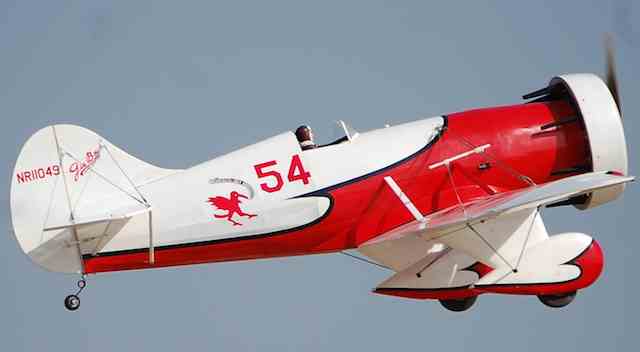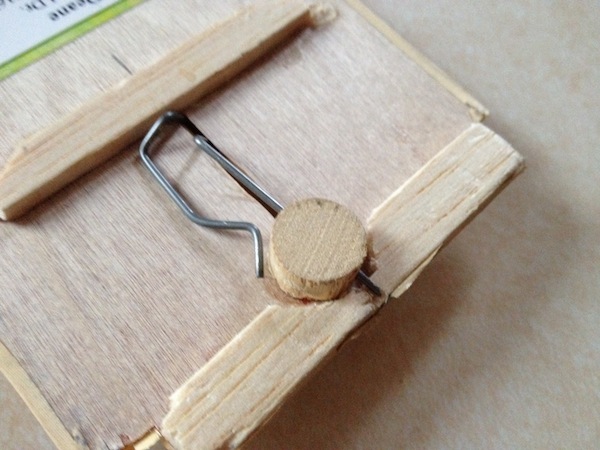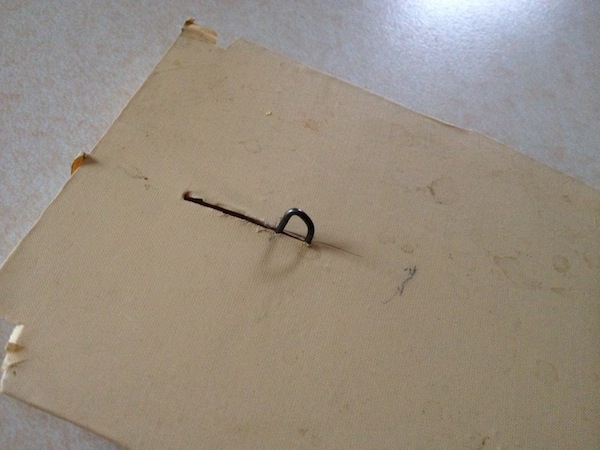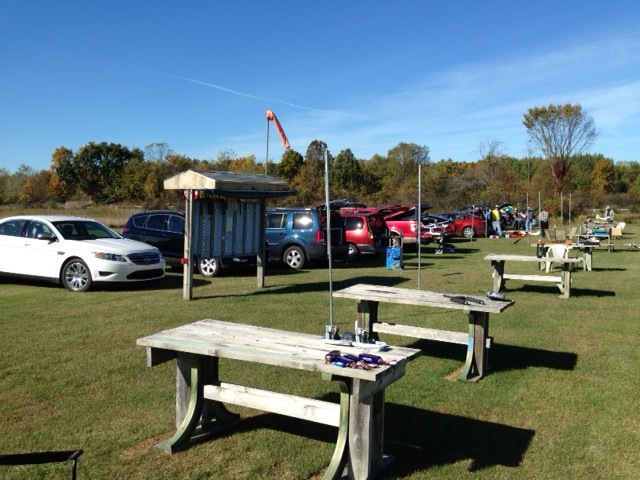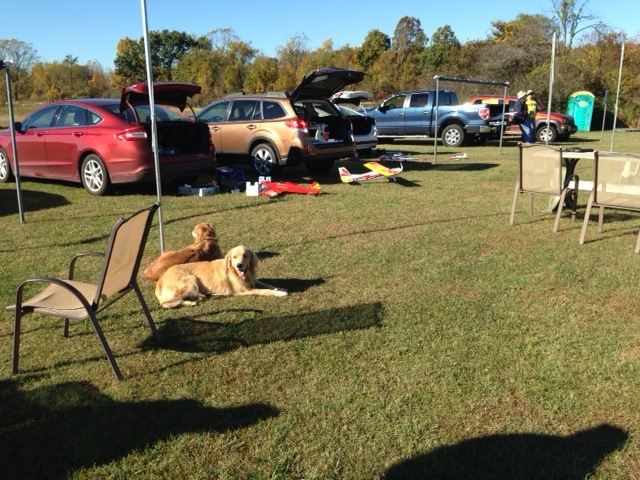 |
Flying High With Electric Power!
The Ampeer ON-LINE!
Fly the Future - Fly Electric! |
|---|
Site Table of Contents
| President: | Vice-President: | Secretary-Treasurer: |
| Ken Myers | Richard Utkan | Rick Sawicki |
| 1911 Bradshaw Ct. | 240 Cabinet | 5089 Ledgewood Ct. W. |
| Commerce Twp., MI 48390 | Milford, MI 48381 | Commerce Twp., MI 48382 |
| (248) 669-8124 | (248) 685-1705 | (2480 685-7056 |
 | ||
| Board of Directors: | Board of Directors: | Ampeer Editor |
| David Stacer | Arthur Deane | Ken Myers |
| 16575 Brooklane Blvd. | 21690 Bedford Dr. | 1911 Bradshaw Ct. |
| Northville, MI 48168 | Northville, MI 48167 | Commerce Twp., MI 48390 |
| (248) 924-2324 | (248) 348-2058 | (248) 669-8124 |
| The Next Meeting: Date: Wednesday, December 9 Time: 7:30 p.m.
Place: Ken Myers' house (address above) | ||
| Indoor Flying Season Has Started in Brighton, MI Indoor flying dates announced. | A Response to: What Happens to the Amp Draw if a Cell is Added to a Battery Pack and the Same Motor, Prop, and ESC Are Used? Burkhard Erdlenbruch responds to Ken's Add a Cell article. |
| An E-Flite Charger Safety Recall Jim Yuzwalk shares this important safety information. | Maxford Gee Bee E / Y Bash - More Drama Gary Gullikson shares more information on this ARF. |
| A Battery Hatch Latch Arthur Deane, EFO member, shares info and photos on a type of simple hatch latch he is using. | The Minnie Mambo in the March 2014 Ampeer Ralph Bradley and Bob Aberle share Mambo information. |
| Wire Sizing for Amp Draw Scott McKie asks for suggestions on this topic. | Photos from the October 2015 EFO Meeting Enjoy the fall photos. |
| Hitec Aurora 9 System Gary Gullikson shares what he's learned about this radio. | New Era III Denny Sumner shares information on this classic kit build. |
| AkroJet Update Keith Shaw shares some knowledge gained after a bit of an oops with this plane. | |
From Jim Young via email Once again the Hamburg Flyers R/C Club is hosting indoor flying at the Legacy Center in Brighton MI. Flying started on November 5th and continues through April 2016. Flying is Every Thursday from 12:00 noon to 2:00 pm (Except December 24th and 31st)
Special Dates: Wednesday December 23rd and 30th 12:00 noon to 2:00 p.m. The Legacy Center is located at 9299 Goble Dr., Brighton, MI 48116. It located at the corner of Winans Lake Road and Rickett Road, which is near the Silver Lake Road exit of US-23. A Response to: What Happens to the Amp Draw if a Cell is Added to a Battery Pack and the Same Motor, Prop, and ESC Are Used?
Hi Ken, That's a nice riddle you're asking us (your readers), or isn't it a riddle? "Anyway, for me, most of the riddle is what you're driving at. "There must be something I don't get or else the answer to your question would be just too obvious. At the risk of disgracing myself I'll try: Bud (the one with the 9-cell going to a 10-cell sport plane KM) should be safe in any case since the increase in amp draw (measured by Innov8tiveDesign) is rather small. After all Bud has a "big" ESC, which can take a bit. In Bert's case (the one with the Zoomer going from a 2-cell to 3-cell pack KM), the measured amp draw increase is big and far too big for the ESC. But you might be implying that the measured values are static and amperage is considerably lower at full speed. (That could be true, but I really wasn't trying to imply that. KM) The ESC might stand a few seconds of severe overloading until speed reduces amp draw below the safe limit. Even in that case I'd think Bert is not safe, though, because in my calculation experience amp draw at maximum speed is reduced only to 0.75 or 0.7 times the static value. And the multiplying factors apply to full speed as well as to static because the increase in rpm lets the model fly faster. Drag increases with speed squared so the prop develops more thrust by more torque, accordingly. By the way, my own calculations are off by 30% or even much more unless calibrated by real-world measurements. Even if the motor constants are not manufacturer-specified values but calculated from published measured values, equivalent resistances of battery and ESC are hard to get exactly, not to mention the motor losses dependent on amp and rpm (and the propeller coefficients at all and under load). So the best, and simplest, way is to measure the model static and in flight what may bring accuracy of the calculations to about 10%. Telemetry, however inaccurate, is a real boon today. In that light, we can't thank you enough for the multiplying factors you determined with your hard work and which are obviously so accurate. Thanks again,
Ken's Thoughts I was somewhat surprised to have received so few comments on the article. Burkhard's was the only email I received. Mark Rittinger and Roger Wilfong commented on RC Groups.
The article was prompted by two specific planes that had a 'recommended' cell change with no change in the propeller. A student pilot brought a FliteTest FT Flyer to the field. 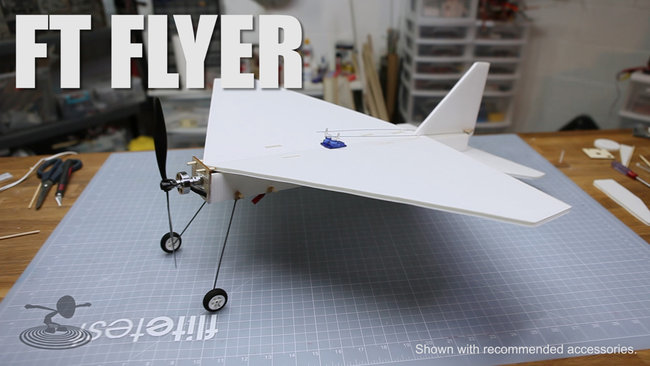
FliteTest Photo The Component List indicated that it could be flown with either a 2S or 3S 500mAh LiPo battery using the same prop. The recommended ESCs are all rated at 18 amps. The Recommended Motors The LazerToyz Blue Wonder 24g [2712-12] is no longer available. The hexTronik 24gram Brushless Outrunner 1300kv is a 24g 1300 Kv outrunner rated at a maximum of 7.5 amps. The Turnigy Park300 Brushless Outrunner 1380kv is a 24g 1380 Kv outrunner rated at a maximum of 7 amps. The Suppo 2208/14 1450kv Brushless Motor (Park 370 equiv.) is a 36g 1450 Kv outrunner rated at a maximum of 12 amps The plane was provided to the student pilot with a 2S about 500mAh LiPo battery and a GWS 8x4 HD prop. I'm not sure what the motor was. Drive Calculator (DC) had no 24g outrunners listed with a Kv value near 1380, but... Drive Calculator listed the Motrolfly 2205-1350 v2. It is a 28g 1370 Kv outrunner rated at a maximum of 9 amps. Using a GWS 8x4HD prop at a constant voltage of 7 volts, Drive Calculator predicted; 4.5 amps, 31.3 watts in, 20.3 watts OUT, at 6840 RPM. 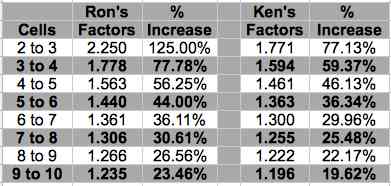
Factors Table Using the prediction table factor of 1.771 for a change to a 3S LiPo yields approximately 8 amps. Using a GWS 8x4HD prop at a constant voltage of 10.5 volts, Drive Calculator predicted; 8.1 amps, 84.6 watts in, 52.3 watts OUT, at 9350 RPM. 3.5 volts per cell was used instead of 3.7 volts per cell because 'small' LiPo batteries tend to have a relatively high internal resistance and 'small' outrunners, like these are quite inefficient. DC notes the 2S system efficiency as 65% and the 3S system efficiency as 61.8%. This data indicates that the 24g motors are 'marginally' acceptable. The power on a 2S 500mAh is marginal. I believe the student pilot had a similar motor installed on his plane. It was difficult to gain altitude outdoors in low wind, and I could never get the plane higher than about 50 feet. The Suppo 2208/14 is in Drive Calculator. Using a the same GWS 8x4HD prop at a constant voltage of 7 volts, Drive Calculator predicted; 6.1 amps, 42.6 watts in, 30.3 watts OUT, at 7800 RPM with a system efficiency of 71.1%. Using the prediction table factor of 1.771 for a change to a 3S LiPo yields approximately 10.8 amps. Using a GWS 8x4HD prop at a constant voltage of 10.5 volts, Drive Calculator predicted; 11.5 amps, 120.6 watts in, 82.8 watts OUT, at 10880 RPM with a system efficiency of 68.6%. The other actual plane was my Freewing Pandora. I covered that power system and what the change would be going from a 3S 2200mAh LiPo to a 4S 3000mAh in the November 2015 Ampeer. 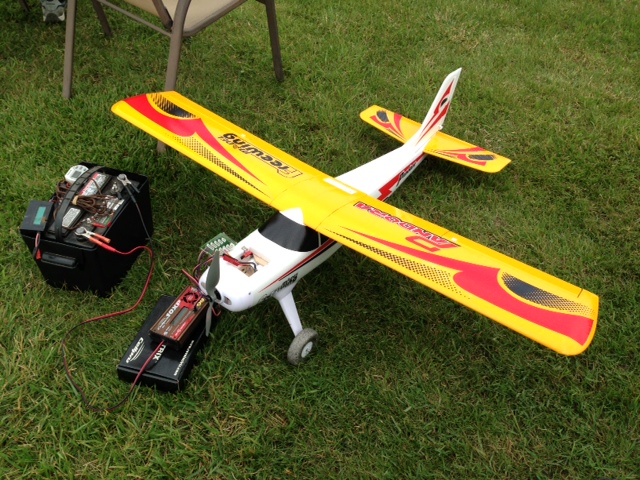
Freewing Pandora There were a couple of things that I felt that I had learned about adding a cell. The percentage of amp draw increase from 2 to 3 LiPo cells and 3 to 4 LiPo cells is pretty large, but maybe not as large as many of us had thought it would be. The percentage of amp draw increase involves a lot of variables and a power meter is essential to see if the predicted increase is close to reality. Planes can, and are, designed that can use the exact same power system (prop, ESC and motor) if care is taken. The FliteTest FT Flyer, using a 2S LiPo battery, could make a good indoor plane. With the 3S LiPo battery, it should be a good outdoor flier. For some chuckles over this long, non-flying season, you might enjoy the videos on YouTube regarding the flying of the FT Flyer. Do a search for FliteTest FT Flyer. The most entertaining thing, besides watching this plane flutter around, are the comments in the titles of the videos of this 'fine flying plane', wink-wink. For those of you who actually saw me fly this plane at the field this summer, I think it will bring back some memories. I can hear you now! Stop laughing! An E-Flite Charger Safety Recall
Hi Ken, I thought the readers of the Ampeer electric flight newsletter would be interested in this safety recall. Best regards, and happy Holidays,
POSTED BY IN COMPLIANCE NEWS ON OCTOBER 15, 2015 IN PRODUCT RECALLS Horizon Hobby, a company that specializes in radio control (RC) hobby products, is recalling 1,300 battery chargers because they can cause a fire hazard. The E-flite Ultra Micro-4AC/DC Battery Chargers can overcharge the batteries and overheat, which could result in property damage, injury, or fire. 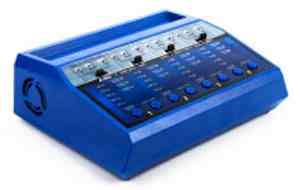
E-flite Ultra Micro-4AC/DC Battery Charger No incidents or injuries have been reported. The recalled chargers were manufactured in China and sold at Horizon Hobby stores nationwide and online at www.HorizonHobby.com from March 2015 through June 2015 for about $70. This recall involves the EFLC1105 E-flite Ultra Micro-4, 4x9W, AC/DC Battery Charger from E-flite. The charger has four independently functioning charge circuits with a LED status display. Each port has nineWatts of dedicated power and can charge specific batteries. The charger is blue with "Eflite Celectra UMX-$ Battery Charger" printed across the center. Consumers should stop using the recalled chargers immediately and contact Horizon Hobby for a replacement charger. Source: CPSC | Horizon Hobby
Maxford Gee Bee E / Y Bash - More Drama
I have put more time and effort into getting my electric powered .40 sized Maxford Gee Bee E/Y flying than any built-up scale model project. A number of other fliers of this model have had much better success including Greg Gimlick who wrote the nice review in Model Aviation. Note: Greg prefers using 15x8 props on his model with a fair amount of right aileron trim. After a number of ill-fated maiden flight attempts and much work on landing gear/wheel pants, wing tips and tail feathers, and with the help of an expert flier/scale modeler, Bob Goff, I have had a few sorta nice flights with it. The model originally flew as if it was extremely tail-heavy, so we gradually added a total of 11 ounces of fishing weights to the firewall. Finally discovered CG was not the problem and removed all but 2 ounces of nose ballast.We angled the right aileron upward a lot, and got the model controllable. I recently discovered that the left wing panel had about one degree less incidence that the right panel despite matching perfectly at the center. I am changing the front and rear peg holes to make both panels have the same incidence overall but with a 1/8" mismatch at the center. I also plan to reduce prop diameter from 14x8 to 13x8 to reduce torque effects and need for so much right aileron trim. I had considered replacing one wing panel with one that matched the other, but that would require $80 in cost and considerable effort replacing one permanently mounted gear leg and wheel pant and adding dummy rigging wire attachments that I had added in changing the model from a funny looking Model E to a more scale-like Model Y. I would not recommend this nice looking ARF to anyone who was not experienced with flying short coupled, pitch sensitive models with huge dummy radial engine and cowl ring, dummy rigging and wheel pants. All I want to do is to finally get some enjoyable stick time with this one and then retire it. There is a Concept Fleet Model 2 Bipe project that wants to get started. 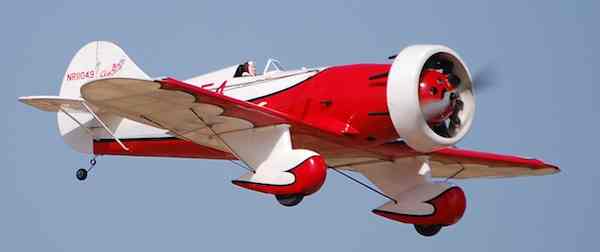 Gary Gullikson
A Battery Hatch Latch
After the April EFO meeting, Arthur followed up with information on a hatch latch he's using. KM Ken, Enjoyed last night. It was a Good meeting. Attached are some photos of the latch I use. The photos show a more compact and neater installation. The rear crossbar is not a travel stop. It is used to reinforce the 1/32 plywood cover plate. The unlock stop is actually the end of the slot. 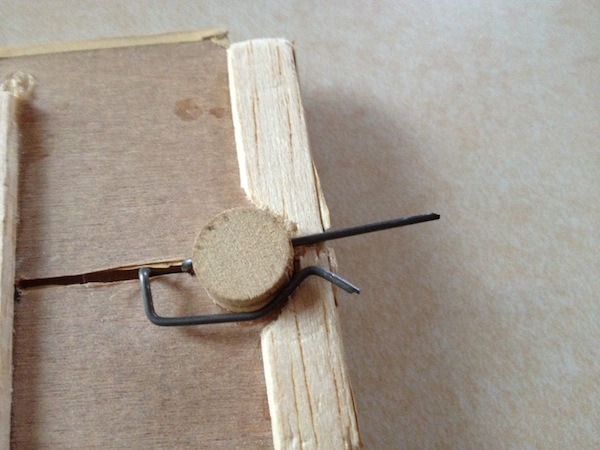
AJ The Minnie Mambo in the March 2014 Ampeer
I enjoyed your article on the restored Minnie Mambo. My brother, Paul, built a full size 48" Mambo in 1957 which was our first attempt at R/C. We both have a soft spot in our hearts for the Mambo. Bob Selman has been developing some vintage R/C designs in Peanut scale. They use the radio from the Parkzone Mini Vapor and finish out to a flying weight of about 22 grams. Of course we had to do the Mambo. 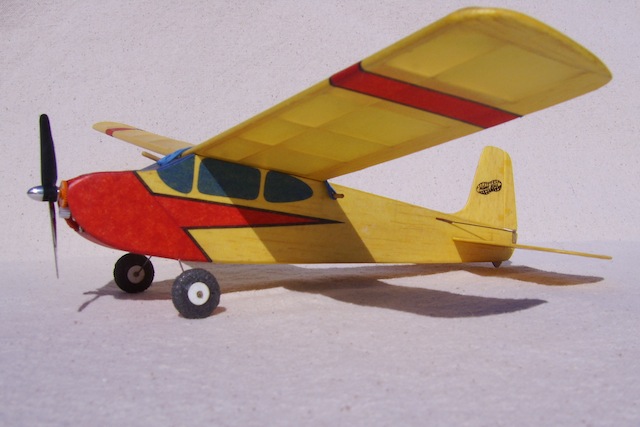 Attached are photos of my Peanut Mambo. The Peanut Mambo is a reduced version of the original 48" Mambo released by Sterling in 1955. Note that there are some fuselage design differences between the Mambo and the Mini. In addition to the Mambo I have built the Guided Mite, Lightning Bug and Esquire. All have proven to fly as well as the originals. 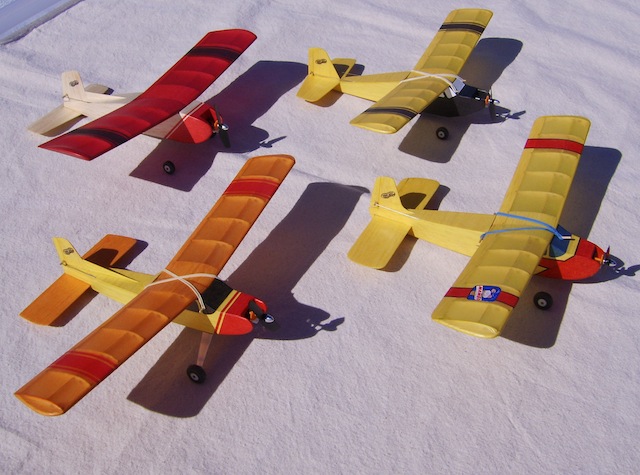 Take care,
and Ken, Couldn't help but notice the reference to a Minnie Mambo in your latest AMPEER. I published one at 150 square inches and 7.2 ounces in the July 2012 RC MICRO WORLD. There are full specs and several photos in the article. For info, Bob Selman now has an ultra micro version of the Minnie Mambo at something like 13 inch span and less than one ounce. Bob A. 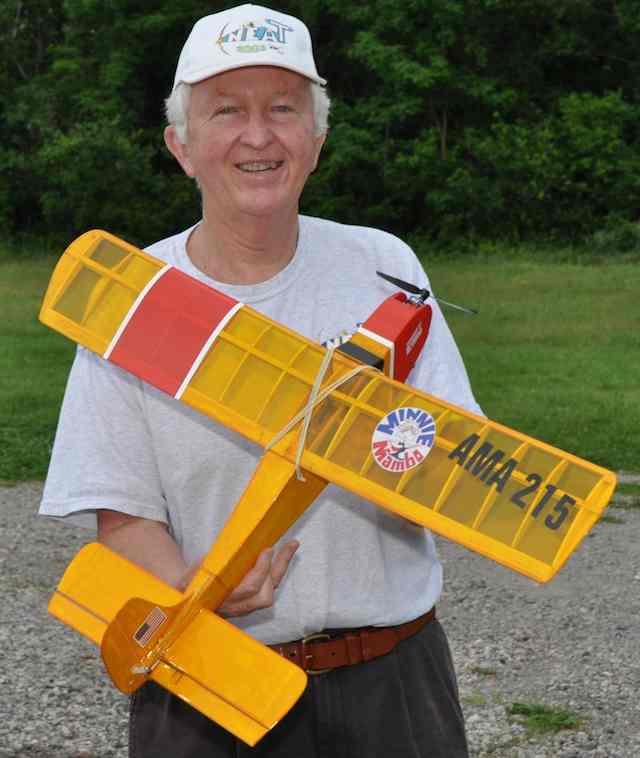 Here are Bob's specifications for his version from the noted article. KM Model: MINNIE MAMBO-150
Type: An Indoor/Outdoor Electric powered micro trainer/sport model with three channel control of the rudder, elevator and motor throttle. Wingspan: 30 inches
RC GEAR USED: Horizon/Spektrum DX-7 transmitter 2.4 GHz spread spectrum, Spektrum AR6115 and two E-Flite S-60 Sub Micro servo (for elevator and rudder control) POWER SYSTEM USED: Horizon E-Flite PARK-250 brushless outrunner motor, GWS 6 X 3 prop, E-Flite 5 amp brushless ESC and a Cheetah 2 cell 850-mAh (35C) Li-Poly battery (45.2 grams or 1.6 ounces). POWER SYSTEM (parameters)
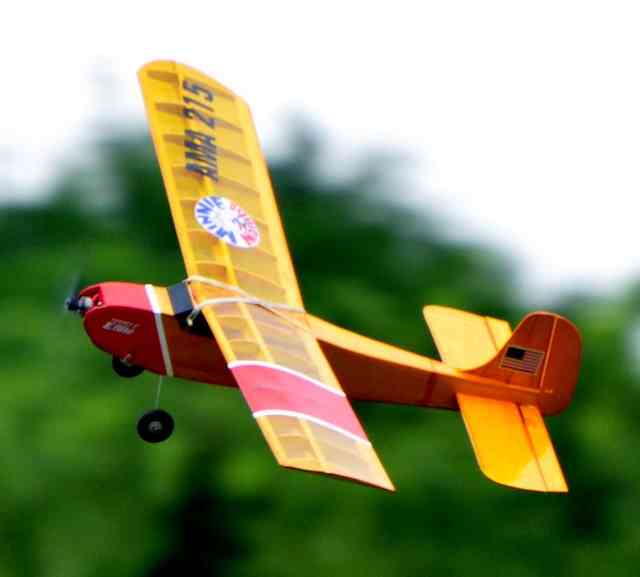
Return to "What's In This Issue" Wire Sizing for Amp Draw
Scott is referring to the April 2014 Ampeer and the article on the EFO Web site by Ed Anderson titled "EVERYTHING YOU WANTED TO KNOW ABOUT ELECTRIC POWERED FLIGHT".
Hi Ken, This is a great issue. Thank you for putting it together. About the book (from the front sheet), about "everything you wanted to know about e-power" (paraphrase); the one thing I found totally missing is information about what size and type of wire should be used to connect all of those separate pieces together with. And it is partly this information that I am trying to find out for a personal reason. I got a power supply project going and really need to know about the amperage thing. Specifically, do you have stowed away somewhere a graph or list of specifically what the safe amperage that each AWG size of wire could carry at both 12 VDC and 120 VDC. I'm really interested in AWG multistrand #20, #22, and #24 (all multistrand) wire as would be available locally at say Radio Shack or an electronics parts store? I hope that you can help me with this. Scott McKie 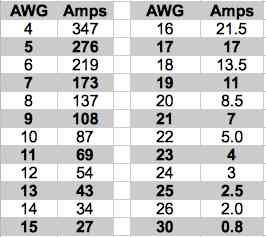
Return to "What's In This Issue" Photos from the October 2015 EFO Meeting Saturday, October 10, was the PERFECT flying day. Temperatures were moderate and so were the winds. We had a great time! Fall flying in Michigan doesn't get any better than this. 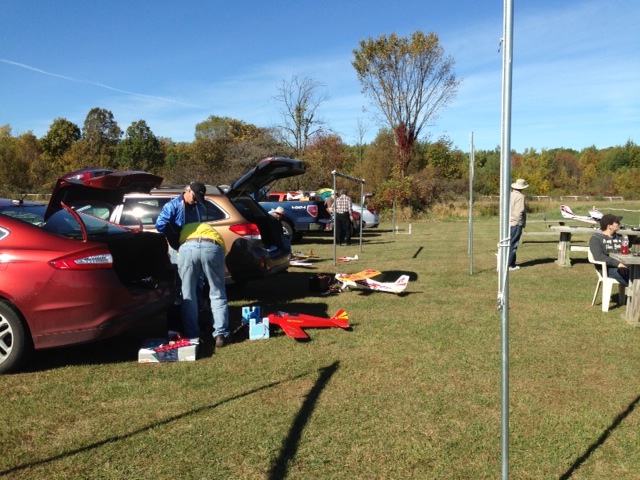
Return to "What's In This Issue" Hitec Aurora 9 System
My Hitec Aurora 9 system is highly versatile and programmable with many switch assignments and, programming options and for all kinds of models. The name "Hitec" is apropos. The transmitter manual and instruction sheets that come with most Hitec equipment are hard to follow, contain errors, and often omit necessary detail, and use flow charts instead of clearly written "how to" information. I am a built-up electric powered scale model enthusiast. It seems to me that the manual and touch screen menus should make setting up 3-position switch-controlled flaps, trimmable in takeoff and landing positions, with slowed servo response, and down elevator offsets fairly easy to do. After much head scratching and attempts to get how to info from Hitec, I finally found a tech who advised me that each of the two flap servos should be assigned to a separate flap channel instead of a Y cable to channel 6. This will make each flap trimmable and adjustable independently instead of the two servos fighting/interacting with each other on the Y cable. One major "PRO" thing that I like about the A9 is the positive throttle-off lock feature on the touch screen. It requires a positive firm touch to engage and a positive touch to disengage. One "CON" thing I especially don't like is the fact that a model, with battery left connected, will respond to the transmitter even when a different model memory is selected. I have forgotten to disconnect a battery in a model that I landed , selected a different model memory, and started to take off with a different model, when the previously flown model tries to take off in the pits. Luckily, no damage or injury, just embarrassment. I don't know if there is a way to prevent this when using the A9 transmitter, other than to always make sure battery is disconnected immediately after a flight.
It should be a nice easy flyer. I'll probably use a Cobra 3525/12 and Cobra 60 amp ESC with 5amp SBEC and 4S 4500mAh LiPo battery. That is the same as I used in my Maxford Gee Bee Model E. Keep up the good work on the Ampeer. Gary Gullikson, Garden Grove, CA "E-Challenged" on RCGroups Just thought that the above may be of benefit to someone thinking of buying Hitec vs Spektrum or one of the other systems. Spektrum is the only brand with 'true' model match memory. The Taranis will model match, but only with certain receivers or in a certain mode. I'm not sure which. Maybe some Taranis owner can let us know. KM New Era III
The New Era flies great! It is quite fast at half throttle and rolls and loops like a dream. It wasn't bad flying today (May 6, 2014), a little cool but warmer than when we flew yesterday at 5 Mile Rd. and Beck. Denny 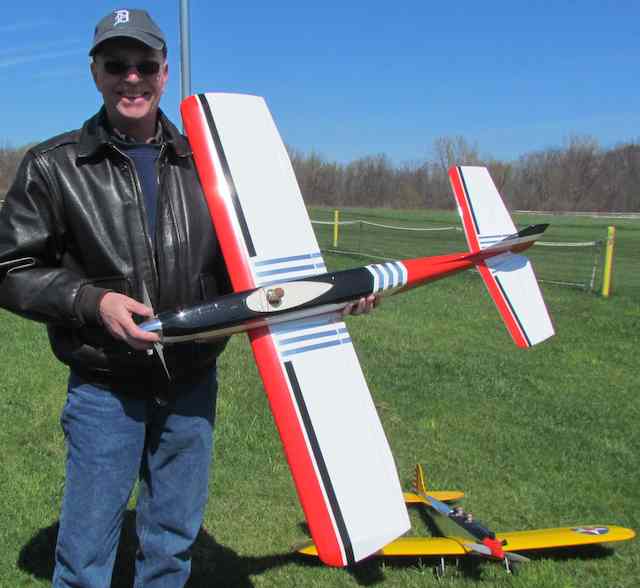 These are Denny's specs from his build thread on RC Groups. Wing Span: 44"
AkroJet Update
I wanted to let everyone know that I test flew the AkroJet today after the repairs from the unintentional face plant at Dave Grife's meet (2014). The damage was amazingly minor. Did a 5 minute test hop to check trims, tracking and some simple aerobatics, only used 1.5Ah out of the 5 available. Everything went well, but I need to put further testing on hold until I can get some more color on it, as the mostly white plane just disappears at times,***very*** disconcerting. I've drawn up an enhanced color scheme, so tomorrow or Monday I will have the covering iron out. I also want to move the CG back as it feels a bit nose heavy in some maneuvers. And don't worry, I've learned my lesson, the "wild tumble" has been excluded from the aerobatic list. Also have to work on landing slower, it will slow down, but it is all too easy to have the speed ramp back up quickly when in the glide. The planes for today's outing were probably as different as possible. In addition to the AkroJet, I also flew the Wright Flyer twice, and got a couple of flights on my "newest" project. While I had been flying my ancient Ted Strader Nomad with two servos and on 2.4G, it felt like I was cheating. So last week I spent a lot of time staring at my oscilloscope with soldering iron in hand. The result is that the Nomad is now retrofitted with its original Adams Baby Twin magnetic actuator, using a little converter for digital receiver output to pulsing duty cycle output. It flew today with the rudder merrily flapping away in the breeze, fixed elevator, and completely under control. Brought back many fond memories from 40+ years ago. I think I am finally going through my second childhood by enjoying antique methods of flying. Keith 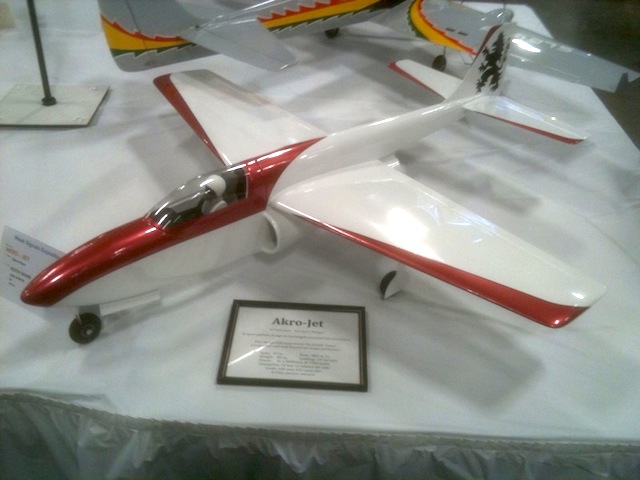
Photo of Award Winning AkroJet at the Toledo Show (2014) Return to "What's In This Issue" To Reach Ken Myers, you can land mail to the address at the top of the page. My E-mail address is: KMyersEFO@theampeer.org |
